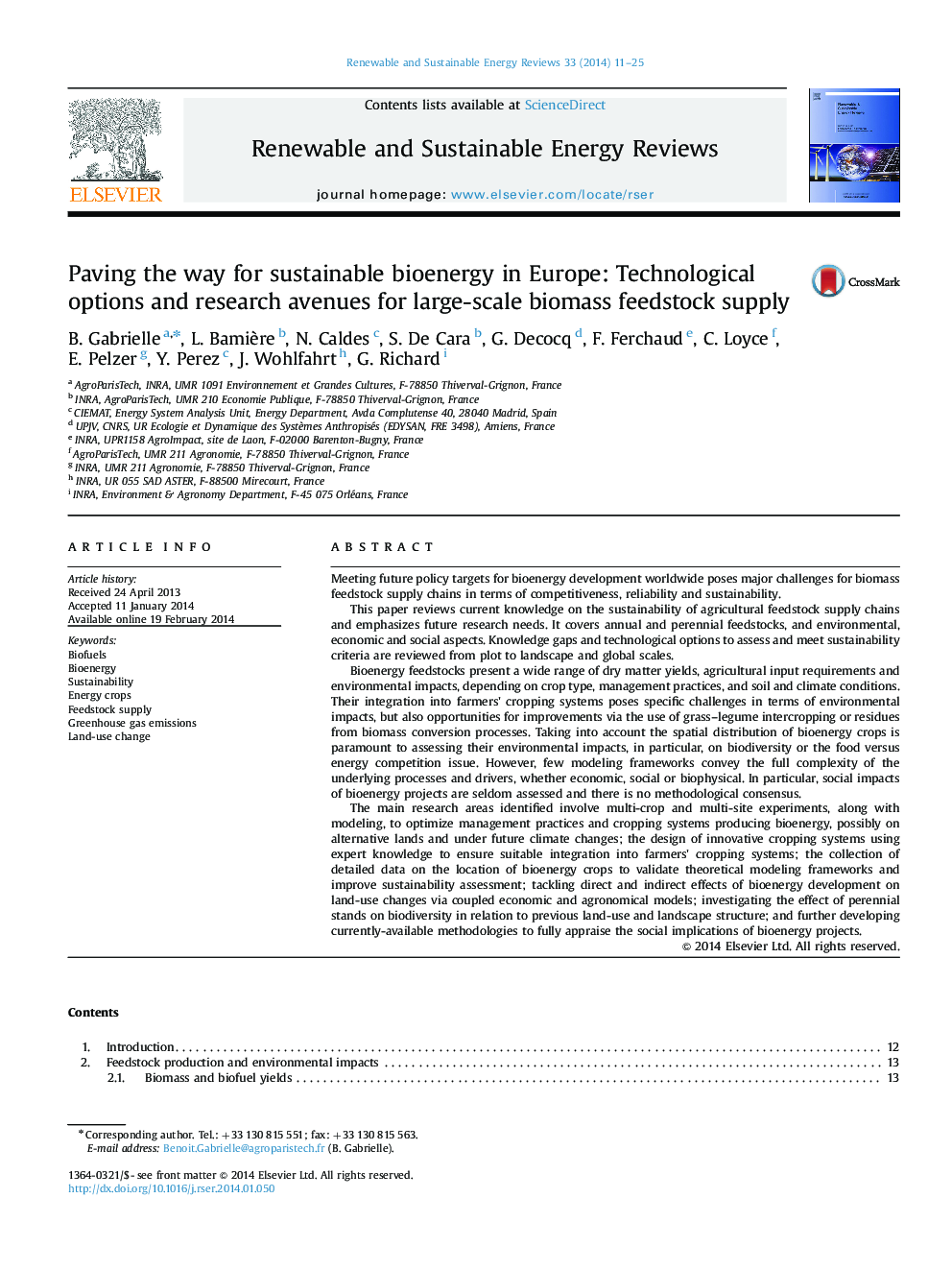| کد مقاله | کد نشریه | سال انتشار | مقاله انگلیسی | نسخه تمام متن |
|---|---|---|---|---|
| 1750256 | 1522352 | 2014 | 15 صفحه PDF | دانلود رایگان |
Meeting future policy targets for bioenergy development worldwide poses major challenges for biomass feedstock supply chains in terms of competitiveness, reliability and sustainability.This paper reviews current knowledge on the sustainability of agricultural feedstock supply chains and emphasizes future research needs. It covers annual and perennial feedstocks, and environmental, economic and social aspects. Knowledge gaps and technological options to assess and meet sustainability criteria are reviewed from plot to landscape and global scales.Bioenergy feedstocks present a wide range of dry matter yields, agricultural input requirements and environmental impacts, depending on crop type, management practices, and soil and climate conditions. Their integration into farmers׳ cropping systems poses specific challenges in terms of environmental impacts, but also opportunities for improvements via the use of grass–legume intercropping or residues from biomass conversion processes. Taking into account the spatial distribution of bioenergy crops is paramount to assessing their environmental impacts, in particular, on biodiversity or the food versus energy competition issue. However, few modeling frameworks convey the full complexity of the underlying processes and drivers, whether economic, social or biophysical. In particular, social impacts of bioenergy projects are seldom assessed and there is no methodological consensus.The main research areas identified involve multi-crop and multi-site experiments, along with modeling, to optimize management practices and cropping systems producing bioenergy, possibly on alternative lands and under future climate changes; the design of innovative cropping systems using expert knowledge to ensure suitable integration into farmers׳ cropping systems; the collection of detailed data on the location of bioenergy crops to validate theoretical modeling frameworks and improve sustainability assessment; tackling direct and indirect effects of bioenergy development on land-use changes via coupled economic and agronomical models; investigating the effect of perennial stands on biodiversity in relation to previous land-use and landscape structure; and further developing currently-available methodologies to fully appraise the social implications of bioenergy projects.
Journal: Renewable and Sustainable Energy Reviews - Volume 33, May 2014, Pages 11–25
